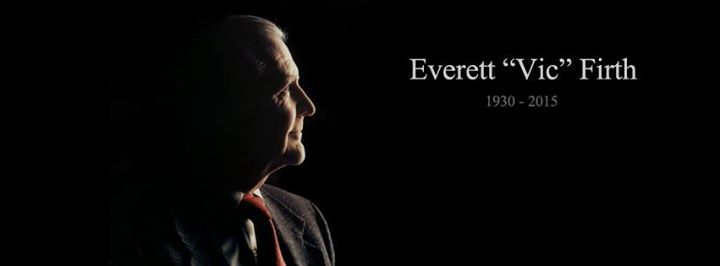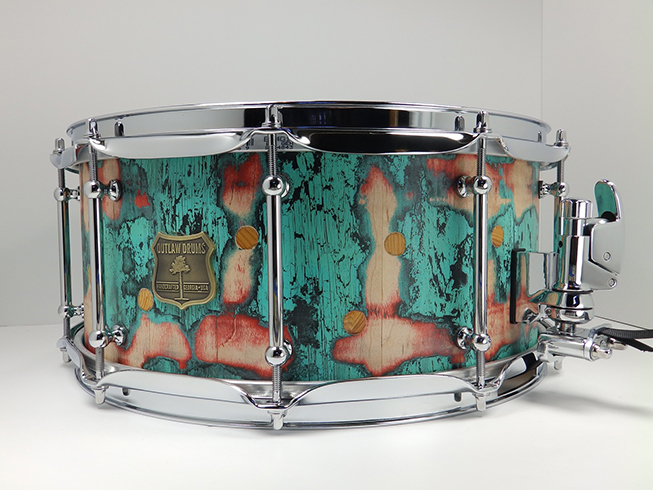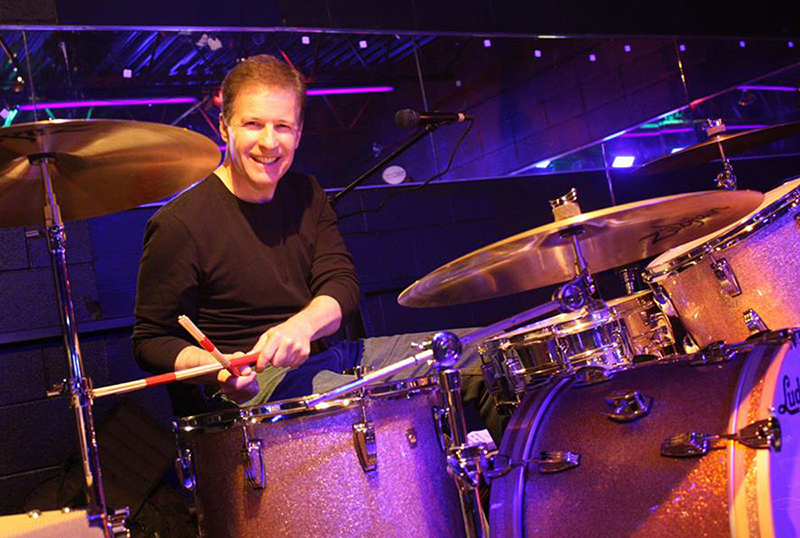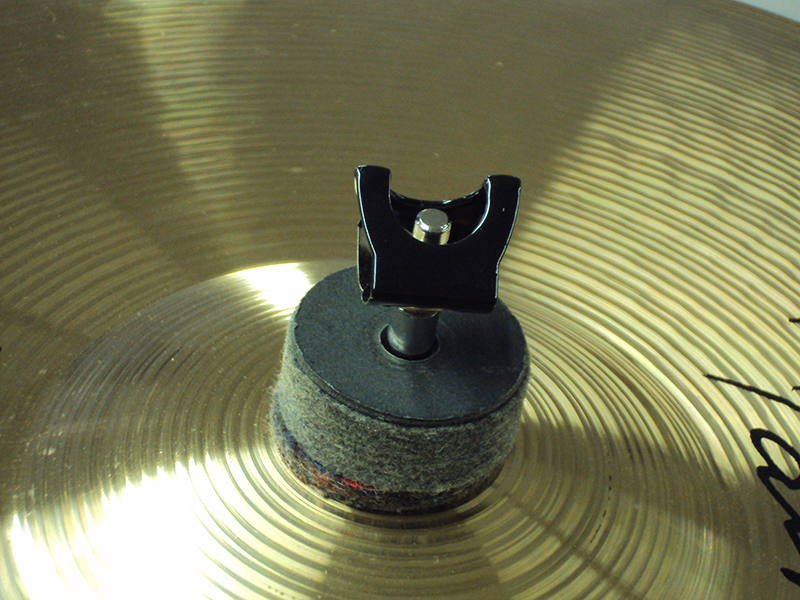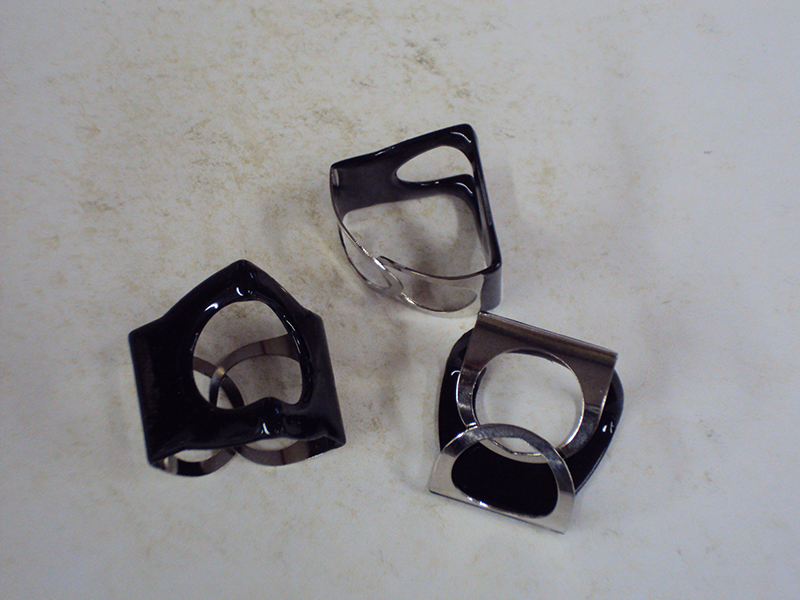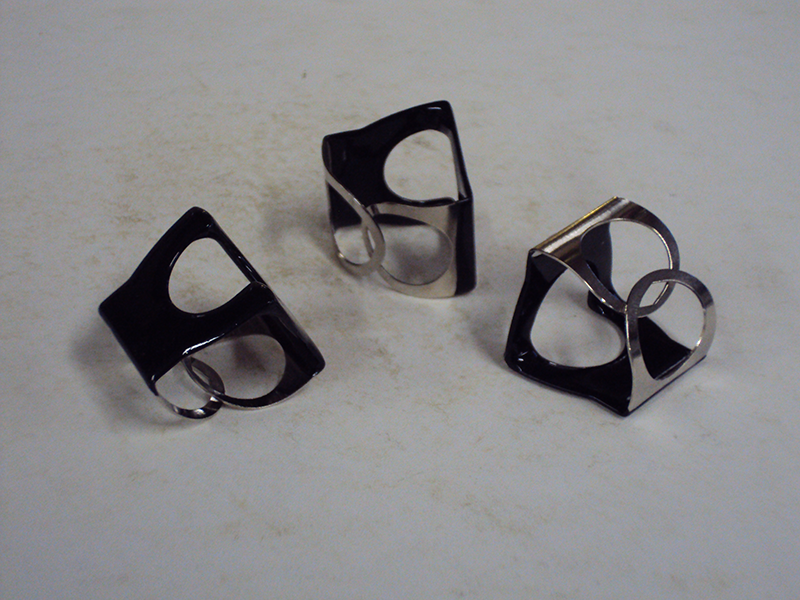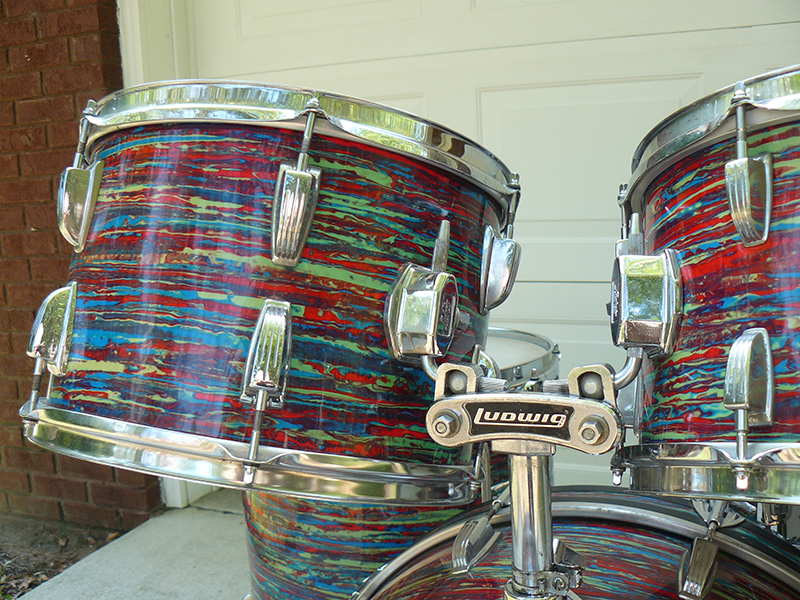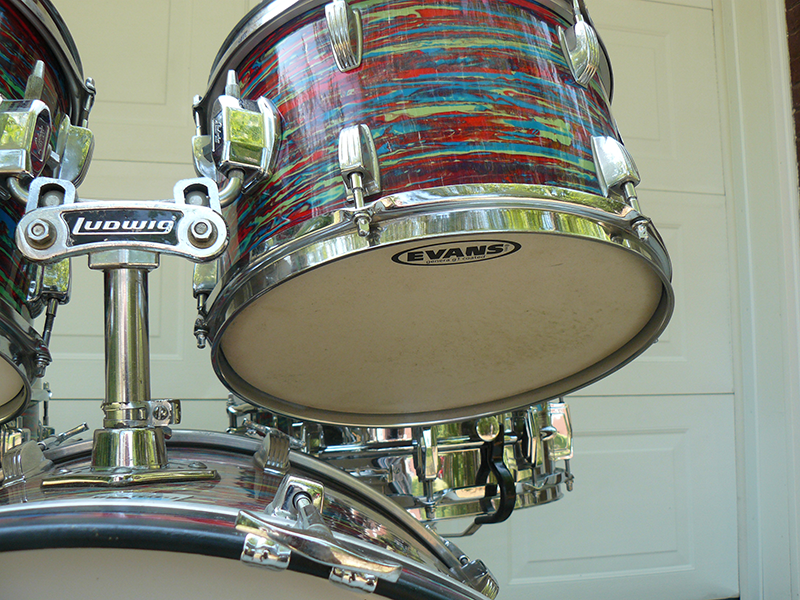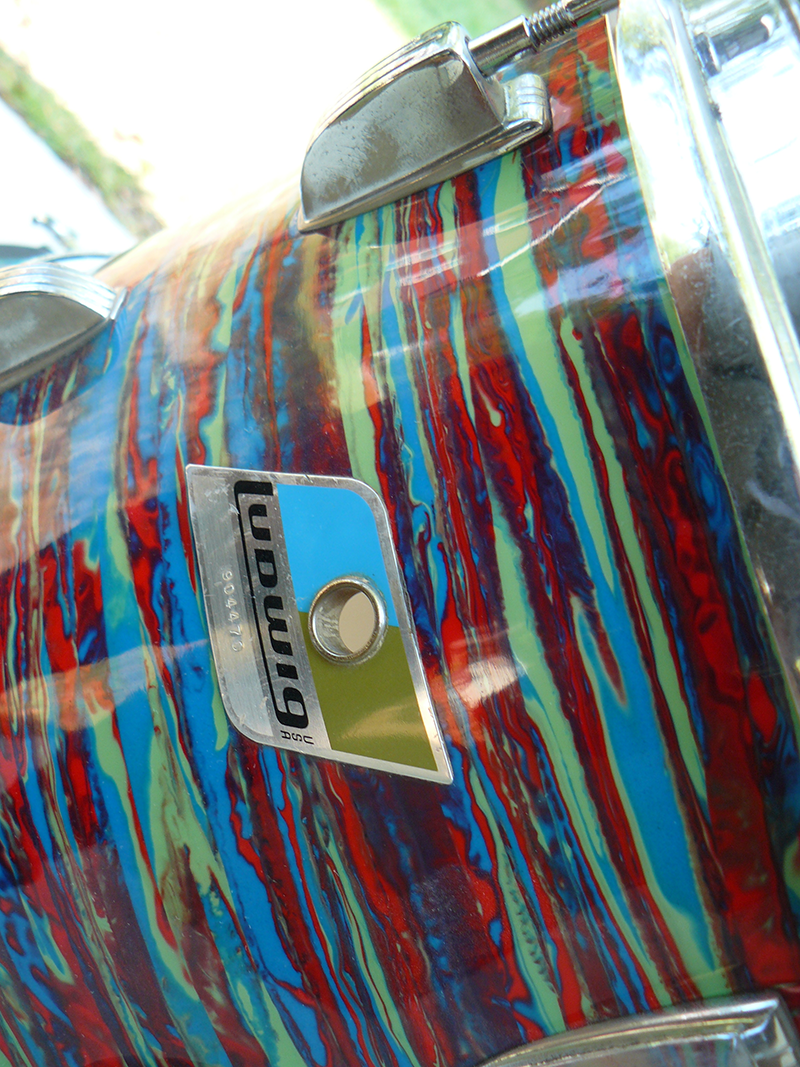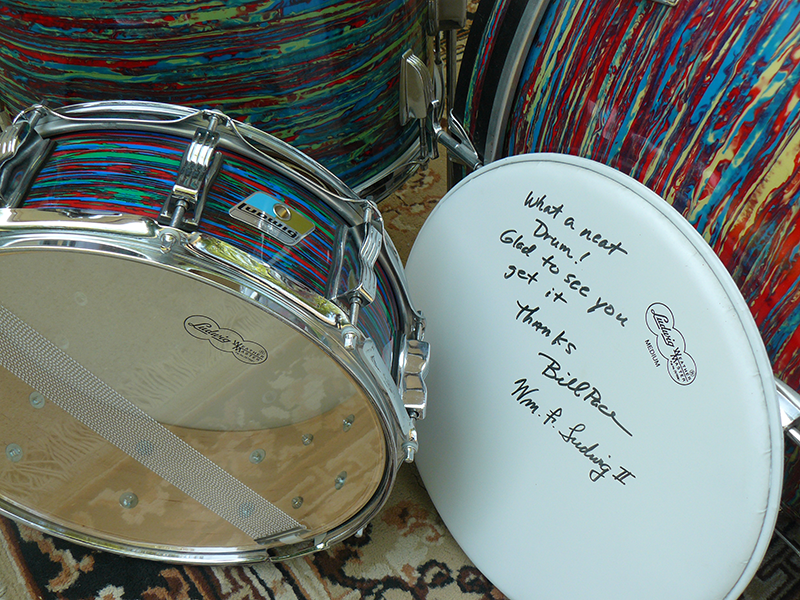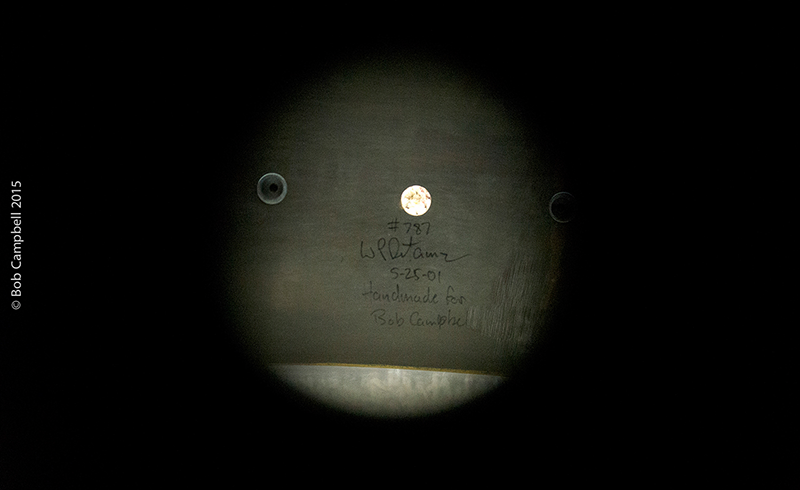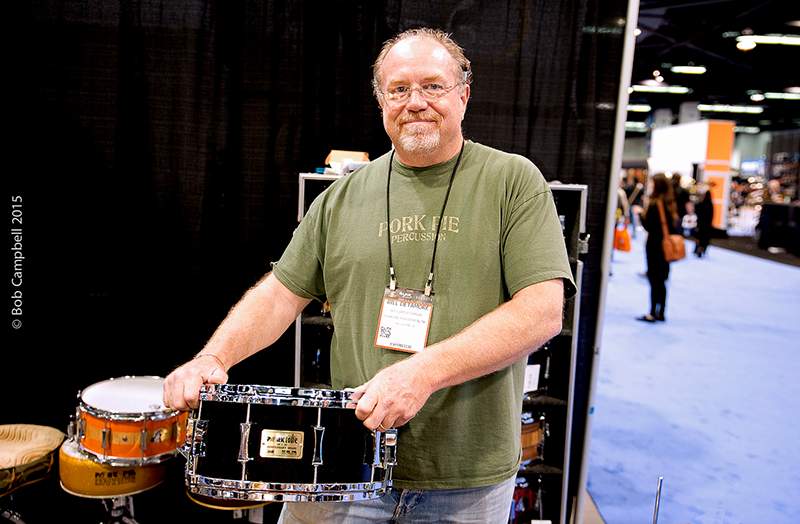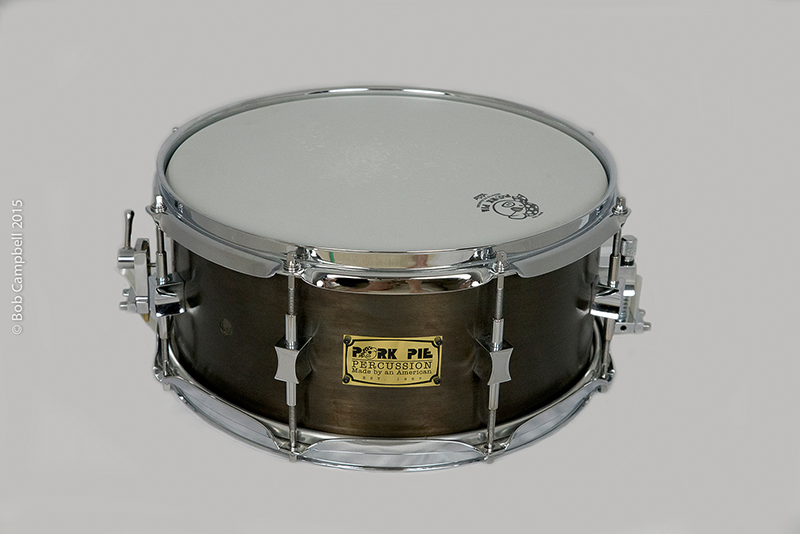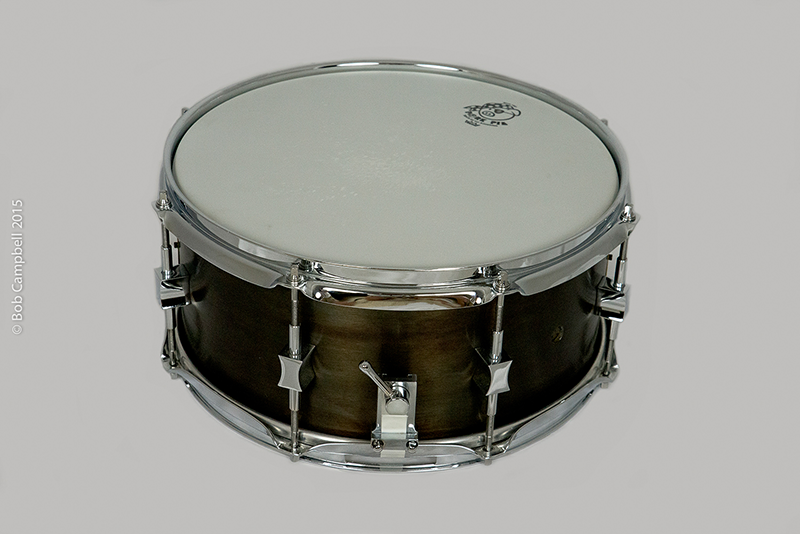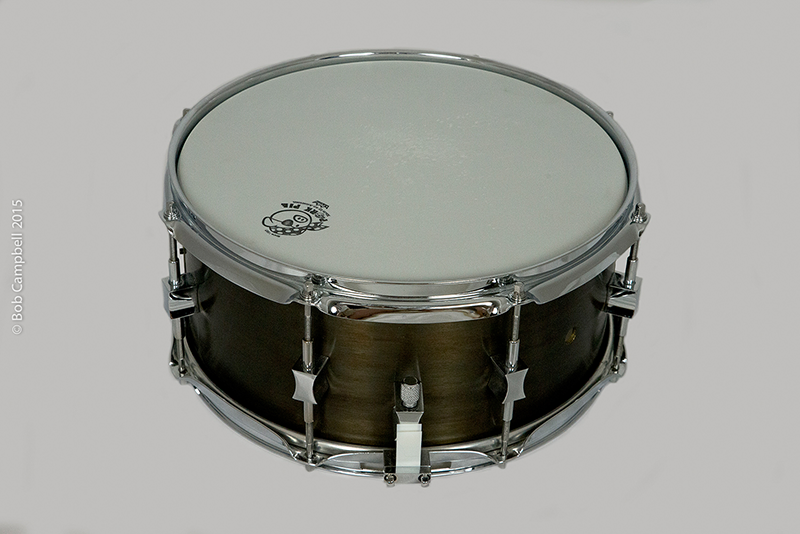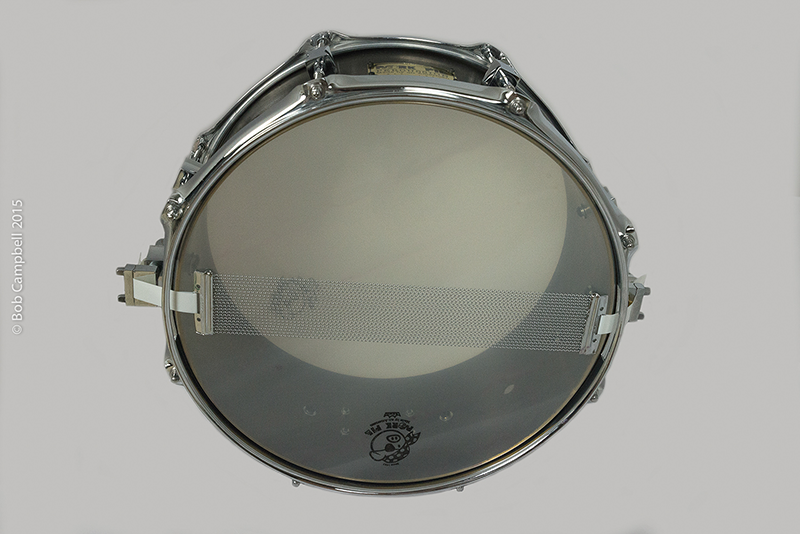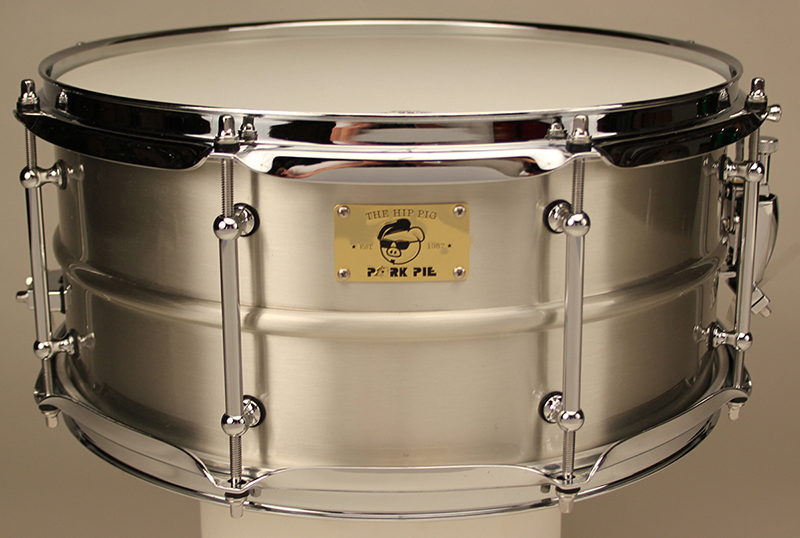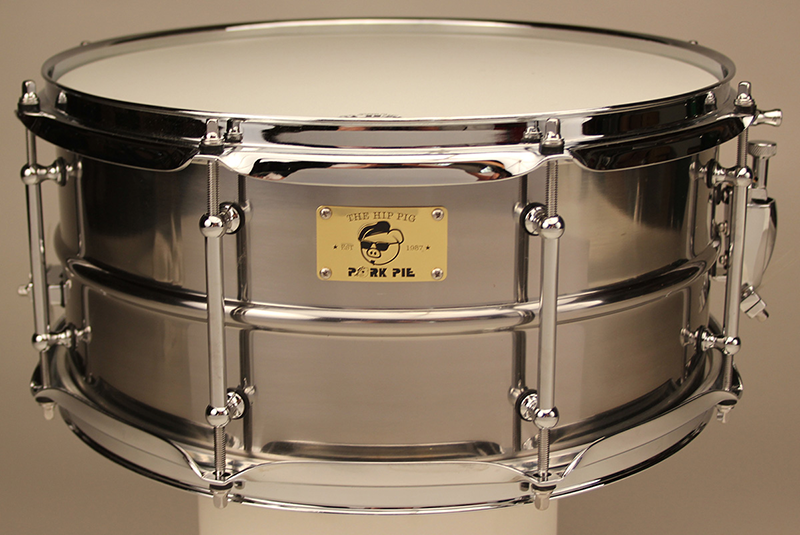We are heartbroken to share the news with you that Vic has passed away. Vic’s spirit and legacy will continue to live at the core of the Vic Firth Company. He will be missed beyond words.
Read moreOutlaw Drums Maple Atlas 14x7 Snare
Outlaw Drums
Read moreRhythm Retreat: Billy Cobham, Dave Weckl and Steve Holmes
Study with world class players in a world class setting! Drumming takes you on an amazing journey. Now there’s a way to take your journey further. Come experience Rhythm Retreat®—an exclusive getaway for those passionate about drumming.
IMMERSE YOURSELF AT OUR NEXT EVENT IN NEW YORK'S FAMED FINGER LAKES:
Billy Cobham Dave Weckl Steve Holmes
Ithaca, NY - August 30th through September 4th, 2015
Each all-inclusive Rhythm Retreat getaway package offers:
- Full-day instruction with each clinician
- Luxury lodging at a refined inn
- Daily travel to/from hotel, restaurants and recreation
- All meals, snacks and beverages
- Unique nighttime recreation
- Private group dinners with clinicians
6, 4 and 3-day packages available. Spouses and companions allowed. Restrictions apply.
For more information, visit: www.rhythmretreat.com
Bob Girouard: Never Give Up
In my high school study hall, I was reading the latest issue of Downbeat featuring Max Roach, Frank Capp, and Bobby Colomby who were featured on the cover. Bob Girouard noticed it immediately and asked if he could check it out. That very 1960s moment was the beginning of a lifelong friendship… We started talking drums, and the rest is History.
"Bob is an inspiration for all of us. His career has covered a lot of ground and his drive and love of drumming is something we can all learn from." - Rob Wallis
Over the years, I have seen Bob go through good times and bad. Musicians know the struggles to succeed. Bob understood this perfectly, yet never gave up. When stricken with Parkinson’s disease in 2003, the challenge became even greater. With each passing day, the God given drumming talents that Bob possessed were slowly fading away.
Previous to being diagnosed, Bob worked steadily with a number of successful groups. His greatest notoriety came with the band Forest. They toured on the East Coast circuit with a potent line-up of truly amazing musicians. At one point they were ready to sign with MCA records. A sudden change in company management caused the deal to fall through. It was a painful moment for the band so Forest took the master tapes and released their album independently. Although recorded in the 1970’s, their music remains fresh and vibrant to this very day. They were recently featured on the Atomic radio network with a Forest retrospective, coupled with live interviews. Based on listener calls, Forest’s album continues to be popular in both Germany and Japan.
I first met Bob Girouard when I was The Band's Road Manager in the 1990s. Bob worked for the City of Albany promoting cultural events. Being a drummer, Bob of course loved Levon Helm. Bob truly believed in the Brotherhood of the Drum, and still does to this day. He would book any band that Levon was part of, out of love and respect, plus a strong desire to be near Levon and Randy Ciarlante, our second drummer. His incredible devotion to drummers, drumming and good music is legendary in our circles. As Levon got sick, and our bookings dropped off, due to the fact that he wasn't singing Band songs, Bob never wavered. He would book Levon and the Barnburners (Levon's blues band) whenever he could. Oftentimes this helped Levon pay his mortgage. As Bob got sick himself, and his ability to drum waned, he took up writing about drummers. His devotion and loyalty to the brotherhood of the drum stayed strong. As my late friend Richie Hayward got sick, Bob wrote eloquently to help Richie's cause. After Richie passed Bob's eulogy was the most touching I ever read. Levon's health also declined and, whenever possible, Bob's writing would boost Levon's spirit and help in his struggle to live. Bob's devotion to drumming and drummers wasn't reserved for the big stars. Bob championed lesser known drummers, and always promoted quality music everywhere. Now Bob has resumed drumming even after brain surgery, and during his life's struggles. I, and the Brotherhood of the Drum, salute Bob Girouard's courage, strength and devotion.
Long may he wave.
Respectfully & Gratefully Butch Dener The Band (ret.)
A large contingent of upstate New York bands gathered to honor Bob with a fundraiser- “Boogie for Bob” to help defray his medical costs. The remaining portion, was donated to the Michael J. Fox Foundation for Parkinson’s Disease research.
Over 300 people attended the venue to help the cause. All the groups donated their performances.
“Boogie For Bob” featured:
- Hair of the Dog: Famed Irish, roots and rock band, and a major draw in the Northeast.
- Aged in the Hills: A Country institution since 1978 *Note: This was Bob's first drumming affiliation when he moved to NY from Mass. in 1986. The band charted in the top 20 nationally with the single, "Cafe Romance," B/W "Cajun Two-Step."
- Ernie Williams Band: In honor of the late "Ambassador of the Blues", they performed. Ernie was a fixture on the local/national blues scene for decades...opening several times for the recently departed, B.B. King.
- Blues House Rockers: Featuring the creme de la creme of blues musicians in the Albany, New York region. They have played with blues/rock icons Little Feat, and Delbert McClinton.
- Diva and the Dirty Boys/Urban Gumbo: An exciting blend of the best traditional R&B musicians w/classic covers, then morphing into Urban Gumbo, segueing into songs from the brand new 2015 album, "Hard Times for Love”, (of which Bob co-produced and played drums).
- Forest: Throughout the 70s one of New England's most critically acclaimed bands. A mainstay in clubs, colleges, and concert halls… It was an original sound that meshed the popular genres of the era: blues, rock, country and jazz, a hybrid between the Allman Brothers, Doobie Bros, Steve Miller, and Steely Dan, with some of the finest musicians to ever come out of Western Mass. Musically, no matter what he's done since, Bob's history begins and ends with this band. According to Bob: "They'll never be another band like Forest...the brotherhood, the musicality, and the respect between each other as people."
Bob played and sang a few tunes throughout the show, although his condition made it difficult, His sheer determination helped him get through it. The event was a fitting tribute to a musician who continues to be loved by many.
"An excellent musician and accomplished writer...THE G-MAN RULES!! I'm proud to call him one of my best friends..." - Dino Danelli
As Bob’s disease continued to advance, he was determined to find another way to stay musically involved. He began writing for Classic Drummer, and Elmore Magazine, and is now writing for Modern Drummer; In 2013 he wrote the cover article on Dino Danelli. Another gathering of Forest alumni is scheduled for later this year, and all proceeds will be donated to the foundation for Parkinson’s research.
Bob Girouard is more determined than ever to keep on fighting. Even after recent brain surgery and a daily regimen of numerous medications, music is a constant presence in his life; he continues to remain optimistic about the future.
With a friendship that goes back over 45 years, Bob recently requested this author become a permanent member of the Forest family.
Musical Artists Interviewed by Bob Girouard: (2005-present)
- Carmine Appice ( drummer, Vanilla Fudge, Rod Stewart)
- Max Weinberg ( drummer, Bruce Springsteen, Conan O’Brien
- Kenny Aronoff (drummer, John Mellencamp, John Fogerty)
- Brian Auger (Brian Auger’s Express)
- Charlie Adams drummer,(Yanni)
- Ray Benson (Asleep at the Wheel)
- Johny Barbata (drummer, The Turtles, Jefferson Airplane)
- George Brown (drummer, Kool & The Gang)
- Clem Burke (drummer, Blondie)
- Pete Best (original drummer, The Beatles)
- Hal Blaine (Session/drumming great: The Beach Boys, The Righteous Brothers, Sonny & Cher, etc.)
- Gary “U.S.” Bonds (R&B Great)
- Deborah Bonham( sister of Led Zeppelin’s John Bonham)
- David Brigati (vocalist, Joey Dee and the Starlighters)
- Eddie Brigati (vocalist, The Rascals)
- Paul Barrere (guitarist/vocalist, Little Feat)
- George Frayne (Commander Cody of Commander Cody & his Lost Planet Airmen)
- Jeff Chonis (drum technician to Ringo Starr, drummer for The Beatles)
- Doug Clifford (Creedence Clearwater Revival’s drummer and now CCR Revisited)
- Aaron Comess (drummer, The Spin Doctors)
- Gene Cornish (guitarist, The Rascals)
- Bobby Colomby (producer/drummer: Blood Sweat & Tears)
- Larry Campbell (multi-instrumentalist/band leader Levon Helm Band)
- Felix Cavaliere (organist/lead vocalist, The Rascals)
- Mickey Curry (drummer, Bryan Adams)
- Micky Dolenz (drummer/vocalist The Monkees)
- Kal David (guitarist/vocalist The Fabulous Rhinestones)
- Burleigh Drummond (drummer, Ambrosia)
- Liberty DeVitto (drummer, Billy Joel)
- Dennis Diken (drummer, Smithereen’s)
- Dino Danelli (drummer, The Rascals)
- Grahame Edge (drummer, The Moody Blues)
- Steve Gadd (drummer, Paul Simon, James Taylor, Eric Clapton)
- David Garibaldi (drummer, Tower of Power)
- Sandy Gennaro (drummer, teacher: Cyndi Lauper, The Monkees, Pat Travers Band)
- Steve Gorman (drummer, The Black Crowes)
- Richie Hayward (drummer, Little Feat)
- Levon Helm (drummer, vocalist, actor: The Band, Levon Helm Band)
- John Hiatt (singer, songwriter)
- Brendan Hill (drummer, Blues Traveler)
- Graham Hopkins (drummer, Motion Picture and Broadway musical, “Once”)
- Don Imus (Radio & TV Personality)
- Jai Johanny Johanson “Jaimoe” (drummer, Allman Brothers Band)
- Kenney Jones (drummer, The Faces, The Who)
- Harold Jones (drummer, Tony Bennett, Lady Gaga)
- Simon Kirk (drummer, Free, Bad Company)
- Jim Keltner (drummer, George Harrison, Joe Cocker, The Travelling Willbury’s)
- Gordy Knudtson (drummer, Steve Miller Band)
- Russ Kunkel (drummer, James Taylor, Carly Simon, Linda Ronstadt)
- Will Lee (bassist, David Letterman Show, The Fab Faux)
- Terry Lickona (producer, Austin City Limits TV Show)
- Corky Laing (drummer, Mountain, Corky Laing’s Memory Thieves
- Chris Layton (drummer, Stevie Ray Vaughn & Double Trouble
- Lyle Lovett (musician, actor)
- Jim McCarty (drummer, The Yardbirds)
- Sir Paul McCartney (The Beatles, Wings)
- Delbert McClinton (R&B Great)
- Neil Peart (drummer, Rush)
- Slim Jim Phantom (drummer, Stray Cats, Dead Men Walking)
- Prairie Prince (drummer, The Tubes)
- Shawn Pelton (drummer, Saturday Night Live)
- Dick Peterson (drummer, The Kingsmen)
- Simon Phillips (drummer, Jack Bruce, The Who, Pete Townsend, Toto)
- George G. Receli (drummer, Bob Dylan)
- Cathy Rich (daughter of Buddy Rich and owner of Buddy Rich drum company)
- Paul T. Riddle (drummer, Marshall Tucker Band)
- Rick Shlosser (drummer, Boz Scaggs, Juice Newton)
- Tommy Shannon (bassist, Stevie Ray Vaughn & Double Trouble)
- Denny Seiwell (drummer, Paul McCartney & Wings)
- Paul Shaffer (keyboardist, composer, musical director, David Letterman Show)
- Yonrico Scott (drummer, Royal Southern Brotherhood)
- Gina Schock (drummer, The Go Go’s)
- Danny Seraphine (drummer, Chicago, and California Transit Authority)
- Neal Smith (drummer, Alice Cooper)
- Floyd Sneed (drummer, Three Dog Night)
- John Steel (drummer, The Animals)
- Ronnie Tutt (drummer, Elvis Presley, Roy Orbison)
- Fred Tackett (guitarist/vocalist, Little Feat)
- Roger Taylor (drummer, Queen)
- Butch Trucks (drummer, Allman Brothers Band)
- Derek Trucks (guitarist, Tedeschi-Trucks band)
- Steven Van Zandt (guitarist/vocalist/actor, Bruce Springsteen and the E. Street Band, Little Steven’s “Underground Garage,” The Sopranos)
- Chris Vatalaro (drummer/percussionist, Antibalas, Bat for Lashes, Imogean Heap, Brian Eno)
- Rob Wallis (CEO Hudson Music)
- James (“The Worm”) Wormworth (drummer, Jimmy Vivino and the Basic Cable Band) Conan O’Brien TV show
1920s Sonor Drums & Hardware
Billy “Thunder” Mason & Friends Show
Nashville drummer Billy “Thunder” Mason is holding his first-ever Billy “Thunder” Mason & Friends Show at Nashville’s Wildhorse Saloon on Thursday, July 9, 2015 at 6:30 pm. Billy’s diverse guests include YANNI drummer Charlie Adams, CHER/PINK drummer Mark Schulman and LOVERBOY’s Matt Frenette.
Billy’s set is very ‘immersive’ by way of utilizing concert footage from his time performing with country music star TIM MCGRAW. There are some surprise performances thrown in, but you’ll have to attend to witness those! Including a mix of Country, Pop, Rock and Classical genres, this show is sure to entertain all family audience members! Come and enjoy this first-ever drumming extravaganza with Billy “Thunder” Mason!
THE VENUE: The Wildhorse Saloon Nashville Address: 120 2nd Ave N, Nashville, TN 37201 Phone: (615) 902-8200
The Wildhorse Saloon will be open to the public. Attendees wishing to be eligible for free giveaways MUST purchase a $20 ticket. The fee gives those attendees VIP seating in the venue’s dance floor area. Tickets are available through the Wildhorse Saloon’s gift shop all-day Thursday. Call: Michelle Hamilton at: (903) 748-7955 to have your name placed on the will call list as well and you can pay for your ticket at the door. The Wildhorse Saloon will begin accepting clinic tickets at 5:00 pm this Thursday.
A portion of the proceeds support OPERATION TROOP AID. This show is a first-of-it’s-kind - don’t miss it!
PinchClip Review
Every once in a while you stumble across something so simple and so useful, you just stop and ask yourself: why didn’t I think of that? Straight from the fertile mind of William “Bill” Feldman, comes a simple accessory that almost rivals the paperclip, and it’s just for us drummers. PinchClip was designed to replace wing nuts and other conventional “nuts” for cymbal stands, accessories, and hi-hat clutches. In just about any situation that you’re using some sort of screw-nut or have a lip to attach to, you can apply a PinchClip.
Just squeeze the PinchClip together with your fingers and place it on the threaded rod of the cymbal tilter and forget about it. Not only will it cut down on the time spent messing around with a wing nut, it will also allow you to properly adjust the space between the “nut” and the cymbal. This small detail will allow you to decide on the fly, how you want that plate swing, or not to swing. PinchClip grips so tight I literally picked up the stand with the plate attached, by the PinchClip, and took the entire assembly for a walk around my studio! No problem!
The next little trick I tried came directly from Bill. He suggested I attach the PinchClip to the bottom of the hi-hat clutch, replacing the screw nut. One thing I really don’t like is having the bottom nut of the clutch work its way loose in the middle of a tune and fall off. You know the game: the top plate stops moving and you no longer have hat control. This worked really well for me, and when it was time to set up and then tear down, the task was done in a moment. You can also apply it to the top position of the clutch, essentially replacing that nut as well.
Bill Feldman is a working architect who studied product design in college and just thought there was a better way to set up and tear down his drum set and save time in the process. PinchClip works very much like a binder clip and is made of specially treated spring steel and is available in a vinyl coated red or black color. At some point in the future, I would expect additions colors to become available.
I must say, I think this is one of those little gadgets that’s very much worth your consideration. Not only did it work as well as advertised, it looks really cool, too. Anywhere you use a conventional nut, you could probably apply a PinchClip. Just think: no more wasting time and effort searching for those dropped wing nuts concealed in the dark and cluttered mess of a stage following a gig. You might even save enough time tearing down to beat the singer or even a horn player out the door for change!
From Lancaster County PA……Thoughts from the Shop.
Brian Hill
1969 Ludwig Psychedelic Red Hollywood Drum Set
It's really warming up for us here in the deep south. I hope your Summer has begun well. I got out early this morning to photograph this drum set for my article and I am still sweating all over the drums as I set them up. I know this set is not mint, but they are a good example of this attractive and desirable finish. I have been writing for the magazine for a while and the reason they keep me around, I guess, is because I am just a regular collector like most of you. I am not a super rich man with unlimited funds to spend on drums. Boy if I were rich I would go wild at the drum shows and keep E-Bay and UPS very happy. Instead, I save for a while and look until I find a kit or snare that really turns me on. I have bought a few pieces every year for the past twenty years, and sold a few pieces now and then. I have sought to improve the collection as I go along. I will buy a set in a finish I like, and when the set in the same finish in better condition comes along, I'll buy it and sell mine. I really don't consider myself a hoarder. I don't have five matching drums in the same finish or anything like that. If I have an extra drum in a finish another collector wants I share up.
The set I am featuring this month is a beautiful Ludwig Hollywood set from 1969. The wrap is Ludwig's exclusive Psychedelic Red Pearl finish. The big drum companies of that day mostly shared the sparkle colors and pearl finishes on their drums, but no other drum company dared to offer this finish, so it was only on the Ludwig sets. Ludwig tried two other psychedelic finishes on their drums, but they were not as successful in sales compared to this awesome finish. I don't have the time nor words to describe what psychedelic means to us who were from the sixties, but suffice it to say we loved everything psychedelic during that period of our lives. The wild colors are a part of that movement, and these drums are very colorful. Someone described this finish as looking like a "frog in a blender." The badges are the Blue Olive parallelograms that replaced the Keystone badges that year. The interiors are natural maple that has been clear coated. The sizes are typical for the Hollywood sets. Bass drum 22"X14", floor tom 16"X16", mounted toms 13"X9", and 12"X8". The snare is a 14"X5" chrome Supraphonic. This was the type snare that went out with most of the sets sold.
This was one of the earliest sets I bought when I started my collection. When I was in high school, a friend got a double bass drum set of Ludwigs in this finish. When I saw those brand new Psychedelic red drums I couldn't believe how spectacular they looked. I never got over that, so I went looking to recapture that experience by owning a set like those. I told my good friend Bill Pace, who actually had a vintage drum store at that time, to let me know if he found a set I could buy. He called me one afternoon with the news that he had a set in his store if I wanted to see them. I took my son with me to share the excitement. We bought them and I have certainly enjoyed owning them ever since. They are not perfect, as I said, but if you get a chance to buy a set like this in almost any condition you should do it. The finish fades with time and light exposure. The green color is the first to go. Even faded they are still desirable.
I don't know if this will make the editors cut or not, but I also included a picture of a Ludwig factory Psychedelic wood shell Supraphonic re-issue snare drum Ludwig made for me just before they re-issued the color on sets fifteen years ago. I along with others had requested Ludwig re-issue the finish, and so I got one of if not the first one. The head was signed by Bill Pace who sold me the original kit and by the "Chief" Mr. Bill Ludwig.
A Brief History of Pork Pie Percussion & My Limited, Heavy Brass “Porkster” 6.5 X 13” Snare Drum
By Bob Campbell, with Bill Detamore
Around 15 years ago, I had the great pleasure of meeting Bill Detamore, owner/founder of Pork Pie Percussion. I was immediately struck by his intense passion for building drums, pragmatic approaches and fun sense of humor. He was a drummer who started out in the aerospace industry and circled back to what he loved best – making drums. Shortly after we met, Bill told me about a limited series of snare drums he was making out of heavy brass, and using solid brass lugs and throw-off that he designed himself. He was kind enough to send me one to try out – a 6.5 X 13” snare, an unusual size for that time. It had a dull, uniform patina finish with 8 small angular, chrome-plated, hourglass-shaped lugs, and a cool chrome-plated throw-off with a small baseball bat-like lever. The snares were actually tensioned from the butt-plate side. I played it for some time, really enjoying it’s unique character. It was very sensitive and uniform sounding from the edge all the way to center. I expected it to be rather loud, compressed and dull given the weight (this puppy was heavy, although lighter than a Paiste/Ocheltree Spirit of 2002 which would appear a year later). To my surprise, it was quite lively with a very appealing over-ring. It was one of those drums that I knew would sound great unmuffled when needed to cut through the mix, but also fit in nicely with a little Moongel™ for less of an upfront, in-your-face kind of sound. I loved it and ordered a 6 X 13”. My limited, heavy brass Pork Pie “Porkster” was made in May, 2001 (#787, i.e., his 787th drum ever built). Fourteen years later, I still have this drum and only now realize how truly special it really is… However, the story is not just about this very cool drum but about the guy who built it – the guy with all the passion and creativity – Bill Detamore. So I’d like for you to get to know Bill through an interview I did recently and hopefully understand what has kept me so interested in Pork Pie over the years.
Where did your interest in drum construction begin? [Bill] “I started around 1982-83. I was building drums just for myself; nothing was done for customers. It was just me basically learning how drums worked – buy a drum, take it apart, learn how to change it, fix it… At that time, the only place you could get any real information on drums was through Modern Drummer magazine. I would read articles about drum techs like Paul Jamieson - what he said he would do with Jeff Porcaro’s drums; and Pat Foley, he was doing a lot of customization at that time here in L.A. I would read about what they were doing and try to emulate it. I just listened, read and jumped in with both feet. I started buying old drums, mostly snare drums, that I found in a local L.A. paper, the Recycler. For example, if I read in Modern Drummer about packing lugs with felt so you wouldn’t hear the springs rattle, I would tear it part and do that. I’d also clean all the hardware, replace screws, refinish it if needed, learn how fix or replace any broken parts, then put it back together and sell it.”
How did this interest progress to actually building drums? [Bill] “In the back of Modern Drummer (around 1985-86), there was a small ad from the Corder Drum Company for a snare drum kit. This was basically all the parts to put a drum together – shell, lugs, throw-off… basically what Precision is doing now. I didn’t like the Fibes throw-offs with the big handle that came with the Corder kit, so I would add a Ludwig P-85. My father taught me how to shoot lacquer, so I was able to do the finish; then I taught myself how to cut bearing edges. I learned what snare beds are, how they work, and why a snare drum needs them. So I put it all together with the P-85, my beds and my finish, and sold it. I first bought two of these Corder kits, then I bought four, and then started buying shells from Keller. It kind of grew from there.
Now I had been working at Rocketdyne in L.A for 5 years, a company that made the main engines for the space shuttle. I really didn’t like the job so I was looking for anything that was a release from working there. To be clear, when I started Pork Pie, there was never a thought that I would able to one day making a living out of it. I went and got my business license, checking account with the business on it, and started to do little jobs for people. It got more and more busy over time. In late 1987, I received a call from John Good at D.W. saying they were getting ready for the NAMM show but unexpectedly were short-staffed and needed some help. He had to get all his stuff finished so they could take it to the trade show. I had a lot of vacation time, so I took that along with Christmas vacation, and spent about 4 weeks helping them get ready for the NAMM show. After the NAMM show, I started working for D.W. part-time. At the end of each day, I would leave Rocketdyne, drive out to D.W., and work 3-4 hours. Then I would come home and work on my own stuff. It got to the point where I just couldn’t function any more. I was just tired all the time. So I went to John (Good) and said, “Here’s the deal. I’m doing all this stuff and I can’t do it anymore. You need to make a decision; are you going to hire me or I have to go, one of the two.” So he said, “Let me talk to Don.” So they talked and decided to make me an offer to work full-time. I was thinking, “Thank God – now I can quit working at Rocketdyne finally.” So I worked there a painter; all I did was paint. I lasted around one year. I remember the moment I decided to quit and do this (Pork Pie) full-time. It was a Sunday in early June, 1989. I called my mother and said, “I just want to let you know. I’m going to quit my job tomorrow.” You could hear the panic in her voice as she said, “Oh my – are you going to be able to do it?” I said, “I have no idea, but if I’m going to do this, now is the best time.” I didn’t have a girlfriend at the time, my car was paid off; I had only rent and a dog to feed – these were my only bills. I figured if I was going to do this, it was the best time.
This leads to a really funny story (although maybe not so at the time). For my very first job being self-employed, a guy named Jim Carnelli brought me a brand new 5 X 14” Noble & Cooley snare drum in black lacquer to do edges on it. He was in the garage watching me work; it was really hot. I’m cutting the edges on my little router table and my hand was sweating from the heat. Somehow that brand new, solid, one-piece maple shell slipped right out of my hand right onto the router blade, taking a huge chunk out of the edge. So I’m thinking, “This is how it starts. You become self-employed and you screw something up on your first day.” I turned the router off, explained what happened to Jim and showed him the chunk missing out of the edge. Jim looked at it and said, “So – what do we do?” I said, “It looks like I’m buying you a new drum.” So on the first day I was self-employed, I had to buy a new Noble & Cooley snare drum to replace the one I messed up. Later, I took the drum I screwed up to a machinist; we squared off the area that had the big chink missing out of it, made a plug of maple and glued it in place. I let it sit for a few days, filed it close and then re-cut the edges. Mike Fasano has this drum and it’s one of the drums he rents out all the time.”
How did you come up with the name “Pork Pie Percussion”? [Bill] “My friend Mark and I were sitting at my house, and we were trying to think of a good name for a drum company. We had been sitting at my house, watching this movie from New Zealand called “Goodbye Pork Pie” and I just said, “What do you think of Pork Pie Percussion?” Mark goes, “It’s great!” It was right up his alley; he’s a nutty, super-creative kind of guy. That was it – a consensus of two!”
Tell me a little about the drums that Pork Pie Percussion makes? [Bill] “In the beginning, it was mostly maple because that was all you could get from Keller; that was all they made. There was Jasper (maple/gum ply shells) but their minimums were too high. It’s always been hard to get birch shells from Keller. At the time, there were three of us making custom drums: myself, GMS and Joe Montineri. Joe did get one run of shells from Jasper but it was really only Keller at the time. Later, some guys came out of the woodwork and starting making solid, one-ply shells. I got some shells from a guy in Connecticut, Glen (Paquette?). If I remember correctly, I got some oak and ash shells from him. For a while, I got some stave shells from Greg Gaylord, before he started working for Craviotto. We had a deal where, for every shell he would supply me, I would finish a shell for him. Just a couple of years ago, I started getting shells from Carerra in the U.K. I was getting walnut and mahogany and all kinds of different shells from him. Around that time, I started making the wood/brass shells that now everyone seems to like so much. The sad thing is that Carrera are closing their doors (Note: March 31, 2015; just two days after this interview). Dave Carrera has got a really bad lung condition. Fortunately, all of the tools and molds were purchased by North Custom Drums. One of the guys who used to work at Carrera is now working for North, so they haven’t missed a beat.
But in the early days, we had to be very creative. When I started to make 10” snare drums, there were no suppliers of 10” snare side hoops. Everybody takes that for granted now. There were no 10” snare wires either. For my first 10” snare drums, I drilled holes in a snare side hoop with my drill press, so I could have a gate for the snare strap to go through, and hand file the whole gate down. That’s what we had to do back then. After that, I had a machinist cut out a slot in the hoop for the gate. For the 10” snare wires, I had to take 14” wires and cut them down. Sometimes re-soldering didn’t work well because of the chrome plating so I would use epoxy to hold the snare wires in place.”
You’ve also made a series of metal shell drums – could you tell me more about these? [Bill] “The shells for the first Pork Pie metal drums were made by a friend, Larry Gill. I haven’t seen him in years. He was a metal sculptor, like sculptures for people who have way too much money (laughs). At his metal shop, I asked him if he could make some round drum shells. The first question being, “How round can you make them? It has to be pretty uniform.” Larry figured out a way to make the shells truly round and how to weld them. He was my supplier for my heavy brass shells for a while. I did do a few shells out of stainless steel, but 90% were brass. We probably only made about 30-40 shells with Larry, probably closer to 30, so they are pretty special.
After that, I started making the Big Black drum. That was the first drum I really hit big with… In the past, Guitar Center was buying some metal drums from Lee Smith (Drum Paradise). Lee was getting WorldMax shells, putting on some tube lugs, throw-off and hoops and selling to GC; but they cost a fortune. Guitar Center wanted to sell a bunch of them but Lee was pretty limited in what he could do. Jeff Lorenz (Guitar Center) called me up and said, “I’ve got this opportunity. You want to give it a shot?” I said, “Sure!” So we got everything priced out and I was able to beat his price by quite a bit. I think the first order for GC was for something like 40 of these drums. It was a pretty good order. They were selling really well. Then I found out that over in Taiwan, there was really only one company that makes brass shells for just about everybody. The company I deal with over in Taiwan, I asked them if they could get this shell (I sent them a picture) and they said, “no problem.” That’s when we started doing the Big Black, giving it a name and its own tag – that’s how the Big Black came about.
Then GC came to me and said, “We’re looking for a snare drum that looks like its been buried in the mud for 100 years – Can you do something like that?” I said, “Yes, I’ve been doing that for a long time. Some of the brass shells I did back in the day with Larry I would do a patina finish on.” I got in touch with the company in Taiwan and said, “I need these shells and I need them raw.” They said, “Ok, sure - no problem.” I got some samples sent over and then figured out how I could do the patina finish in a production mode, doing batches at a time instead of just one. I figured that out and started making the 7 X 13” patina brass snare. The first order for these from GC was for 400 of them. To date, we have probably made close to 10,000 patina brass and 18,000 Big Black snare drums. It’s kind of like our Pork Pie thrones. I keep saying every year when I see how many we ship, “one day we are going to run out of butts in the world.”
In 2001, we met and had a great discussion about drums. I wound up buying a 6 X 13” limited production, heavy brass Pork Pie snare drum (inside the shell, dated May 25, 2001; #787). Can you tell me more about these brass drums? [Bill] “That particular drum was one of the limited shells made by Larry. The shell is a 1/8” brass plate that’s rolled and welded. At that time (2001), there was no WorldMax where you could go and get shells. If you wanted these heavy brass shells, you had to figure out how to make it. You couldn’t go out someplace and buy a brass shell. If we made a thin wall brass shell, say around 1mm thickness like a brass Supra or WorldMax shell, we’d need the tooling to bend over the edges – this is what keeps those shells round. Tooling for something like that was a huge amount of money. Larry’s thicker shell gave it stability, keeping it round without the special tooling. It wound up sounding great. The way I cut the bearing edges and put my snare beds in. I had a Makita grinder to get the snare beds close to where I wanted them and then I used a hand file to get them the rest of the way. It’s a lot of work. First, I get the contour the way I like it, then round it over and finish it by sanding it by hand. Sanding brass is not easy. For my early drums like this, I designed my own (hourglass-shaped) lugs that were made out of solid brass and my own throw-off (with small baseball bat arm attached to a cylinder) and butt plate, which were also solid brass. Later, when I got to making production drums, the cost was just way too high at that scale. For example, by the time I had the lugs buffed and chrome-plated, my cost in just one lug was $10; the throw-off and butt plate was around $80 – and that was back around 1995-2000! So I decided to go the direction of cast lugs for mass production. I do have a couple of the lugs and throw-offs left in my shop but I couldn’t imagine what the price would be now because of the cost of raw materials rising so much over the last 10 years. Even so, I don’t know of any machinist who could keep up with the numbers we do now.
Of the heavy brass snares, I made one 3 X 13”, a couple of 4 X 13” and 4 X 14”, bunch of 5 X 14” and 6 X 14”, a couple of 5 X 13” and 6.5 X 13”, and one or two 7 X 14”. We also made a couple of 10” snares, and some 12” including one run of stainless steel (12”, 13” and some 14”). That was the only time we did stainless steel because drilling 1/8” plate stainless steel was almost impossible; we were snapping drill bits. I remember we did one 5 X 14” bronze shell.
I started making these brass drums for guys around town. Matt Sorum has a couple of them. He used to buy snare drums all the time from me. I know Duff McKeagan (bass, Guns N’ Roses) has one in his studio; I believe Slash has one in his studio, and Mike Fasano (drummer for Warrant, Don Felder, Tiger Army and Gilby Clarke) has a couple that he rents out. Mike Bordin (drummer, Faith No More) - I think we made him 2-3 of these brass drums. He used one of these in the studio and loved it. He ordered one for the road and one he could have in his trunk as a back-up. I happen to have brass drum #1 at my place, a 6.5 X 13”. They started being used on records here in L.A. Back at that time, it was easy to go down to a recording studio with 10 snare drums, like when Guns n’ Roses were around, have Matt play them when they were recording. What better way to hear how a drum sounds than having Matt Sorum play it and Mike Clink producing?”
What’s your personal favorite snare drum? [Bill] “I always loved solid shells. One of my personal favorites is a solid, steam-bent oak, 7 X14”. I gigged for years and years with it. I’m a meathead rock player. I used to be such a knucklehead for Radio Kings; that’s what I had mostly in my snare drum collection. Those drums had a 60-degree inside edge on them. That’s why I do all of my solid drums with a 60-degree edge on the inside and a round-over counter-cut on the outside. They sound fabulous.”
Any new snare drums from Pork Pie for 2015? [Bill] “One of the drums we introduced at NAMM was the Porktone snare, which is a bell brass shell, 1/8” thick, and limited release (25) in only 6.5 X 14” size. They come in a brushed finish or custom high gloss lacquer over the top. This drum is a combination anniversary celebration for Pork Pie (28th Anniversary) and Soultone cymbals (10th Anniversary). On the badge, it says, “28 – 10 Anniversary snare”. I’ve been doing business with Iki Levy from Soultone cymbals since before he started Soultone cymbals, when he had a drum store. We thought, “How cool would it be if we made a snare drum together?” At first, we tried to make a drum shell out of cymbal material. We had a mold made over in Turkey. They were trying to make us a shell but they ended up being very brittle; that was a no-go. So we wound up getting a cast brass shell from Taiwan.
Another drum we have coming out around the end of July, early August, is the new Pig Iron 6.5 X 14”, 8-tube lug snare, and as the name states, the shell is made out of iron. The shell is thin-walled, rolled and welded, with a bead in the middle. It has a folded over bearing edge with rolled in snare beds. It looks like a Black Beauty snare drum shell but made out of iron. I’m doing them in two finishes: one is raw, polished iron and the other is a stain finish plated in tin. Both are clear-coated with lacquer so they don’t rust. I’m really excited about these. My favorite is the polished shell because it looks like it’s polished graphite. It’s really, really cool. These snares have the attack and body of a steel-shelled drum, but then it’s got the dryness of an aluminum drum.”
With regard to your drums, what has been your career goal? [Bill] “Honestly, I wanted to make drums that somebody would go into a pawn shop or vintage drum store 50 years from now, find something that I made and say, “Hey, these are really cool! This guy made great stuff back in the day.” Like you or me going into one of these places and finding a chrome over brass snare drum the 50’s - that same type of feeling.”
It’s been a pleasure to get to know Bill better over the years and share our love of drums. He seemed quite pleased and honored to know that I still have and treasure my Pork Pie brass drum purchased so long ago. I do think it will be one of those prized and collectable snares 50 years from now. Perhaps it will be some drummer’s great find and they’ll ask – “Who built this amazing brass snare drum? I think these are pretty rare!” Hopefully, they’ll look in the Not So Modern Drummer archives and enjoy learning about an exciting chapter in our drum history; the story of the great Bill Detamore and Pork Pie Percussion. And somewhere, Bill Detamore will be smiling…
1947-50 METJAZZ Snare Drum
Here’s the latest snare drum to enter the collection. I got this drum from Emmanuel Giraudon who owns Oldrums in France (www.oldrums.fr).
Read more
